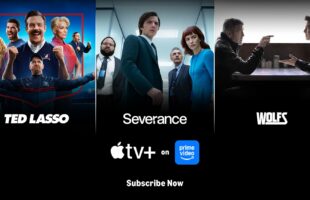Q: When it comes to issues of digital rights management (DRM), what kind of conversations did you have with Astro, and were channels or broadcasters involved in those conversations?
A: Delivering content specifi cally to mobile devices requires a different approach to content security, because these are open devices – they are not controlled by the operator. With Astro, we implemented a Microsoft player DRM. But in order to get the various content owners’ approval, the implementation has to be secure. The service we delivered is called “Active Cloak”. We used our technologies to make the DRM robust and diffi cult to reverse-engineer or hack. On top of that, we deliver a service called “Watch and Defend”, where we monitor the delivery mechanism. If we see that there is a compromise or an attack on the system, we can modify and stop it.
Q: Could you give us an overview of the partnership with IGLOO?
A: With IGLOO, we developed a completely new settop box, which removes the need for a smartcard for conditional access. By embedding the conditional access in the set-top box but retaining the same security level and the same fl exibility with business rules, you can lower the cost of ownership quite drastically, because you don’t have to manage the smartcard, which is just an onerous process.
Q: Is Irdeto working with TV set manufacturers in the area of connected TV?
A: Yes. For example, connected TVs and applications can transmit content to mobile phones in the home. And of course, that link needs to be secured – otherwise, the content can be siphoned out and pirated. We work with our Active Cloak solutions to secure that.
Q: Do content providers highlight certain geographical territories that require more security?
A: It’s more to do with the type of content (than territories). Different types of content have different values and shelf lives. A sporting event has tremendous value LIVE, but it’s a very short window. There is a certain value to it the following day because many people want to watch catch-up, but the value still drops dramatically. So security is very important during that period. But movies have a much longer shelf life because they have different release windows – fi rst in the theatres, then on DVD, on Blu-Ray, on pay media, and then on free media. We have to take a more long-term view and secure the whole chain.
Q: What is your take on the issue of piracy?
A: Previously, pirates were pirates but today we’re seeing a piracy continuum. First, you have the “criminals”, people who do this for money; creating their own pay-TV services. The only way to deal with this is to implement technical and legal counter measures. After the criminals, you have another big group, the “hackers”, who don’t do this for money, but just because they can. Then you have the “casual pirates” – young people who don’t want to pay for a linear subscription. They feel that it is harmless to download a movie, but it actually becomes quite a signifi cant form of piracy. Next are the “frustrated consumers”. These people actually want to pay, but can’t, because the content is not available. Many people just want to consume content and that’s why we need to expand our delivery. After them, there are the “confused consumers”. This is an interesting group, bigger than one may think. These are people who believe they are accessing the content legally, but aren’t. So how do we educate these people? Piracy involves a wide spectrum of people. And when you understand that, you also understand that you need to modify tools. You can’t use the same tools that you use to combat criminals as you do to deal with the frustrated consumers, because with the frustrated consumers, you can use a positive method. Give them what they want, legally, and they will stop taking it illegally. With criminals, you can’t do that.








